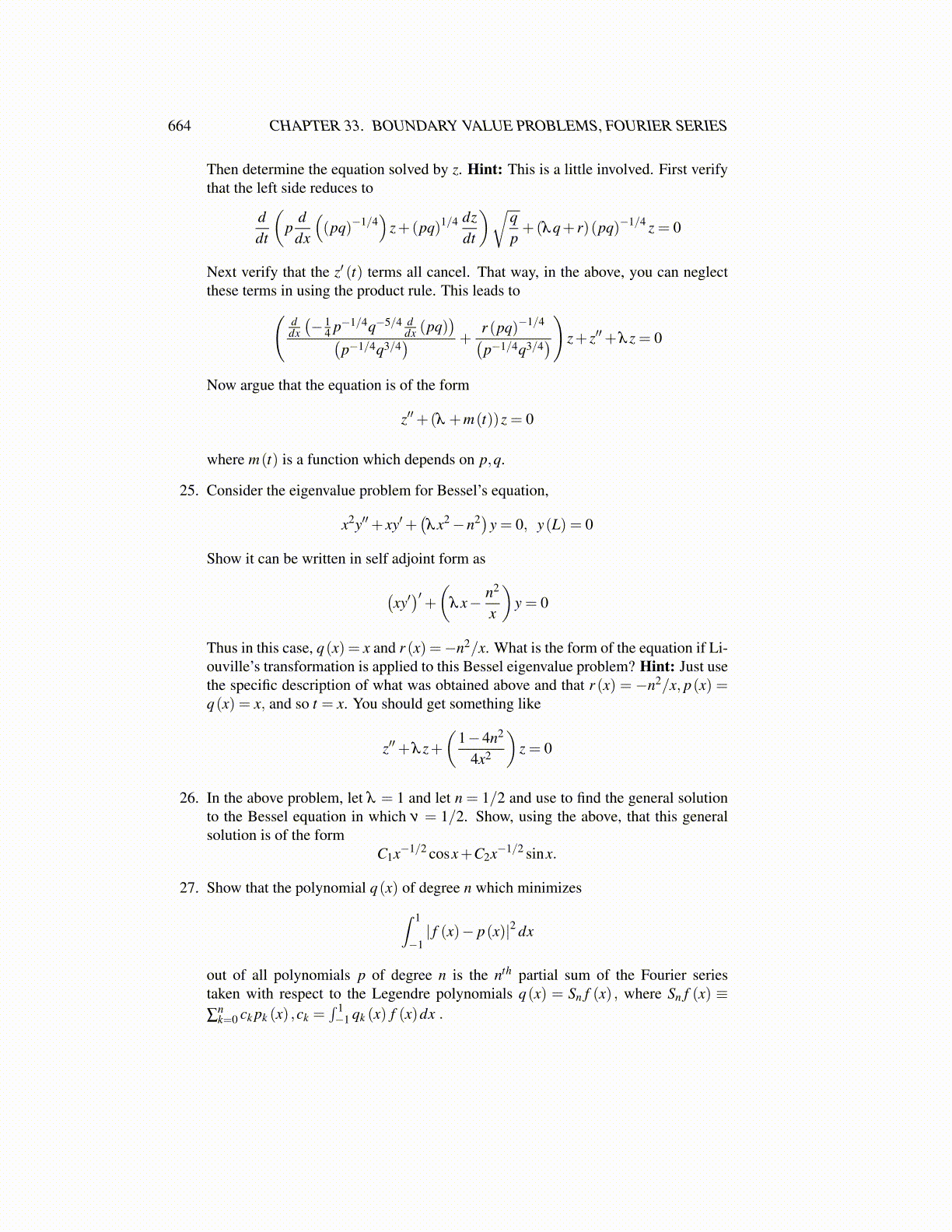
664 CHAPTER 33. BOUNDARY VALUE PROBLEMS, FOURIER SERIES
Then determine the equation solved by z. Hint: This is a little involved. First verifythat the left side reduces to
ddt
(p
ddx
((pq)−1/4
)z+(pq)1/4 dz
dt
)√qp+(λq+ r)(pq)−1/4 z = 0
Next verify that the z′ (t) terms all cancel. That way, in the above, you can neglectthese terms in using the product rule. This leads to(
ddx
(− 1
4 p−1/4q−5/4 ddx (pq)
)(p−1/4q3/4
) +r (pq)−1/4(p−1/4q3/4
))z+ z′′+λ z = 0
Now argue that the equation is of the form
z′′+(λ +m(t))z = 0
where m(t) is a function which depends on p,q.
25. Consider the eigenvalue problem for Bessel’s equation,
x2y′′+ xy′+(λx2−n2)y = 0, y(L) = 0
Show it can be written in self adjoint form as
(xy′)′+
(λx− n2
x
)y = 0
Thus in this case, q(x) = x and r (x) =−n2/x. What is the form of the equation if Li-ouville’s transformation is applied to this Bessel eigenvalue problem? Hint: Just usethe specific description of what was obtained above and that r (x) = −n2/x, p(x) =q(x) = x, and so t = x. You should get something like
z′′+λ z+(
1−4n2
4x2
)z = 0
26. In the above problem, let λ = 1 and let n = 1/2 and use to find the general solutionto the Bessel equation in which ν = 1/2. Show, using the above, that this generalsolution is of the form
C1x−1/2 cosx+C2x−1/2 sinx.
27. Show that the polynomial q(x) of degree n which minimizes∫ 1
−1| f (x)− p(x)|2 dx
out of all polynomials p of degree n is the nth partial sum of the Fourier seriestaken with respect to the Legendre polynomials q(x) = Sn f (x) , where Sn f (x) ≡∑
nk=0 ck pk (x) ,ck =
∫ 1−1 qk (x) f (x)dx .